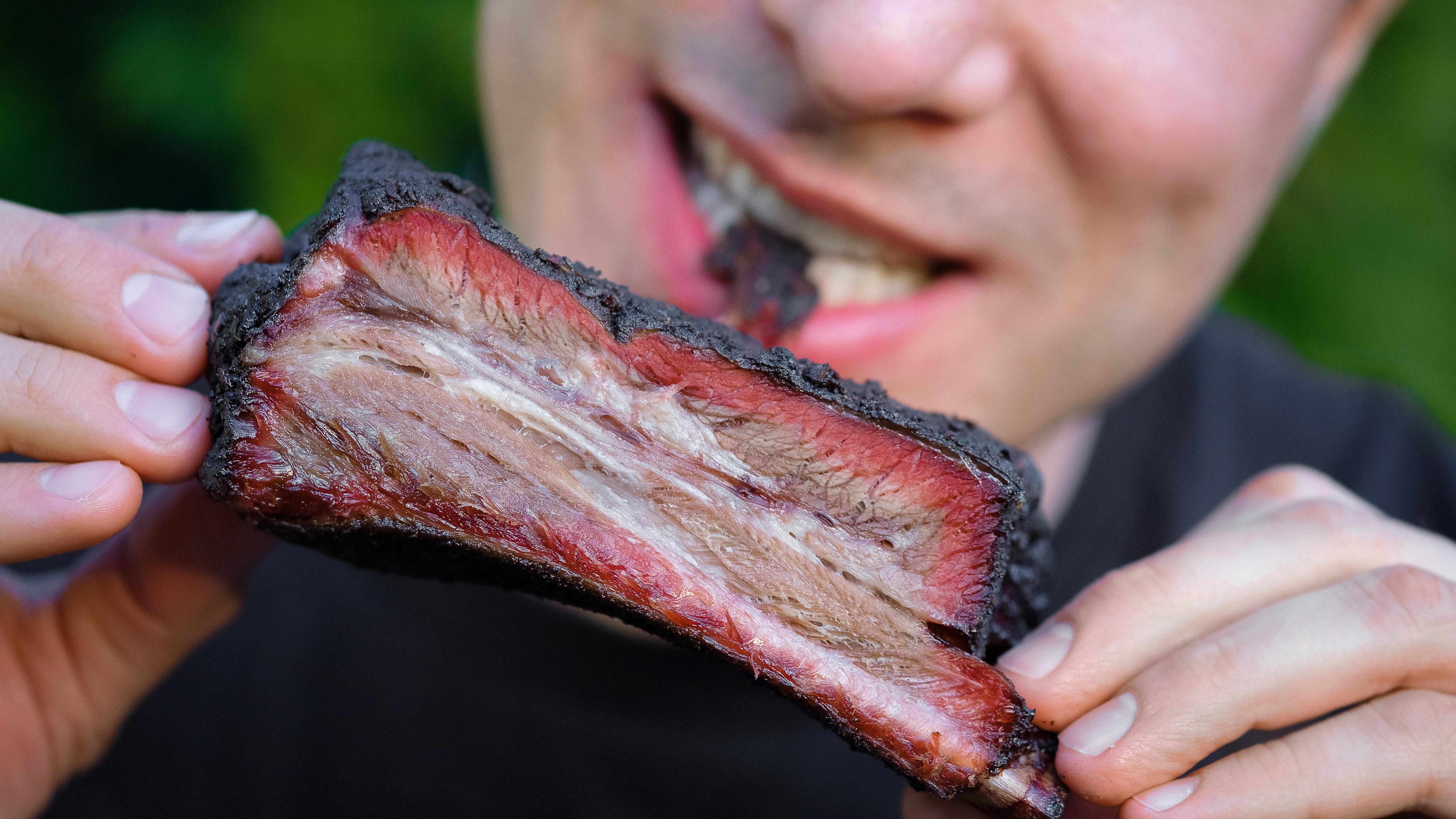If Your Barbecue Is Pink, Don't Panic
Your plate of barbecue isn't pink because it's raw or undercooked.
One of the prized aspects of barbecue is known as the smoke ring. This is the area around the perimeter of a cut of meat, just beneath the bark, where the flesh takes on a pink color. It happens during the normal cooking process, but it turns out that not everyone knows about it, because Raleigh's WRAL News reports that a customer at a barbecue restaurant in North Carolina recently called the cops to report pork she thought looked dangerously pink.
What is the smoke ring on cooked meat?
First of all, if you don't like your food for some reason, there's absolutely no need to call 911, nor should you subsequently trash the restaurant on social media, as that North Carolina customer did. (She ended up leaving a one-star review because she believes the restaurant acted dismissive toward her concerns.) Secondly, the smoke ring is nothing to be nervous about.
While pitmasters and enthusiasts alike once believed the smoke ring indicated a proper cooking session, this has since been debunked; it doesn't affect the taste of the meat. Texas Monthly has a great explainer on the subject, breaking down the food science of how the smoke ring gets its bright pink hue.
Raw meat is red or pink due to a protein called myoglobin. When meat cooks, the myoglobin naturally turns brown, as you see in cooked meat. But if nitric oxide (NO) from the smoke concentrates enough on the surface of your meat, the myoglobin will bind with those concentrations of NO and retain its pinkish color in the process, hence the ring. It doesn't mean the meat is undercooked.
Certain types of wood release more NO than others while smoking meat, and there are other optimal conditions in which a smoke ring will appear; this fantastic explainer from Dr. Greg Blonder, professor of design and product engineering at Boston University, goes deeper into the science of it all. Special conditions must be met for the smoke ring to occur, but that doesn't mean it's necessary for good barbecue. Your brisket dinner can be a uniform brown throughout and still be a perfect specimen.
You can even recreate that pink color by using curing salt, sodium nitrite, which is what locks in that pink color you see in hot dogs, corned beef, and bacon.
Bottom line: When you dig into a plate of delicious barbecue, whether it's something you made at home or bought from a restaurant, there's no need to be concerned over a little bit of pink along the edges of your meat. It's just a natural side effect of the cooking process and, if anything, is an indicator that the meat you're eating isn't undercooked. For the love of God, don't call the cops on a restaurant owner if you don't like your food.
